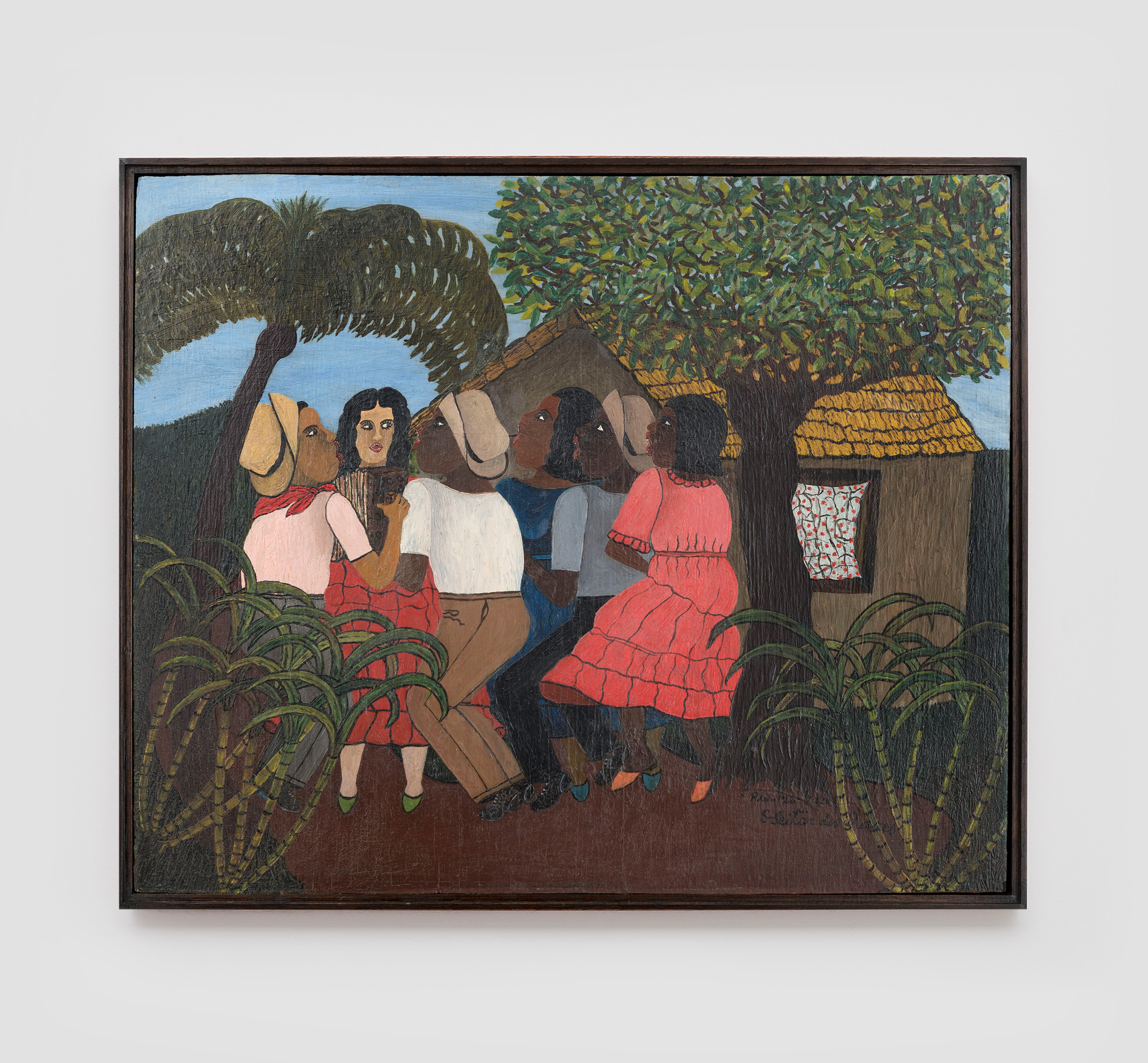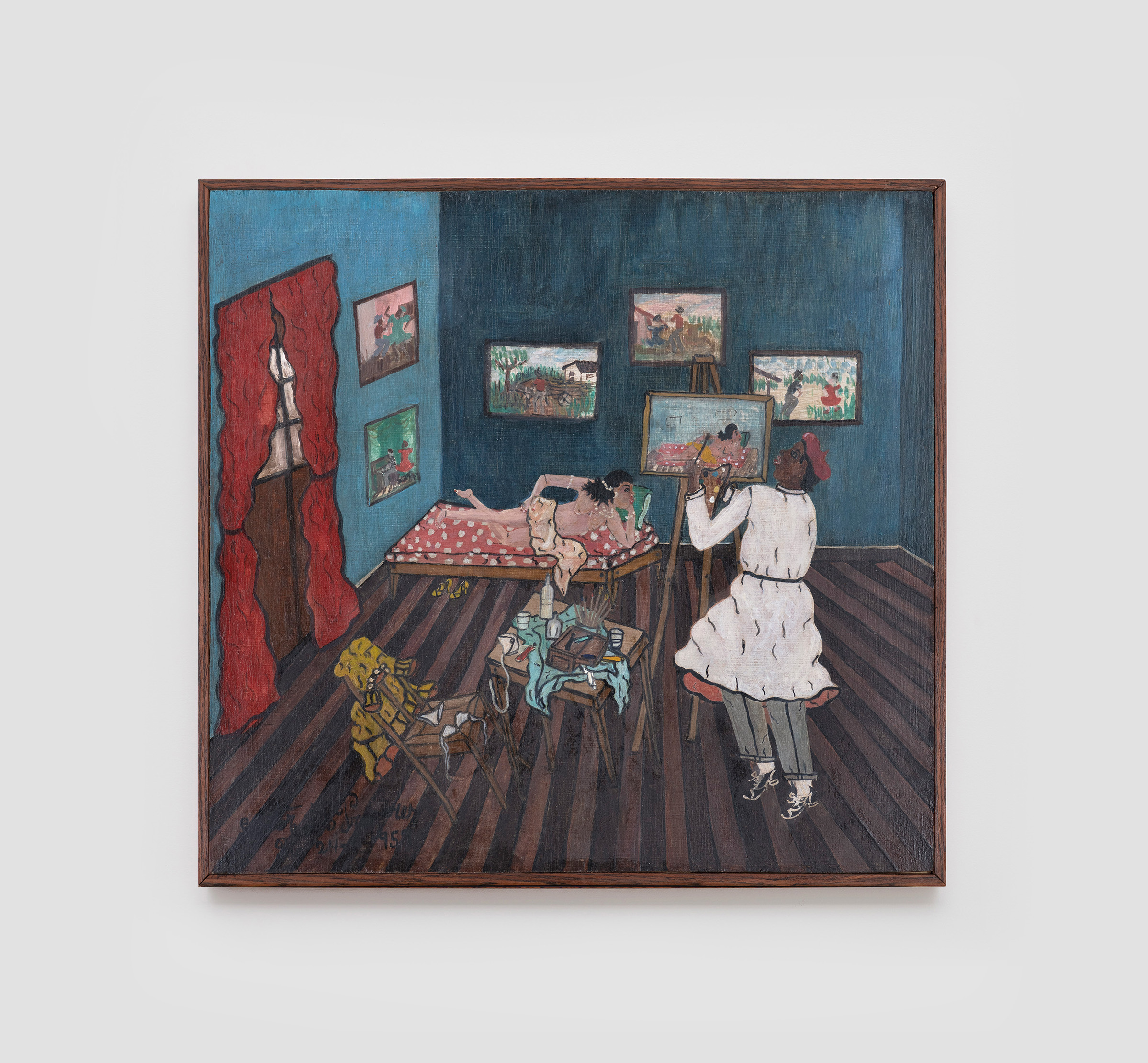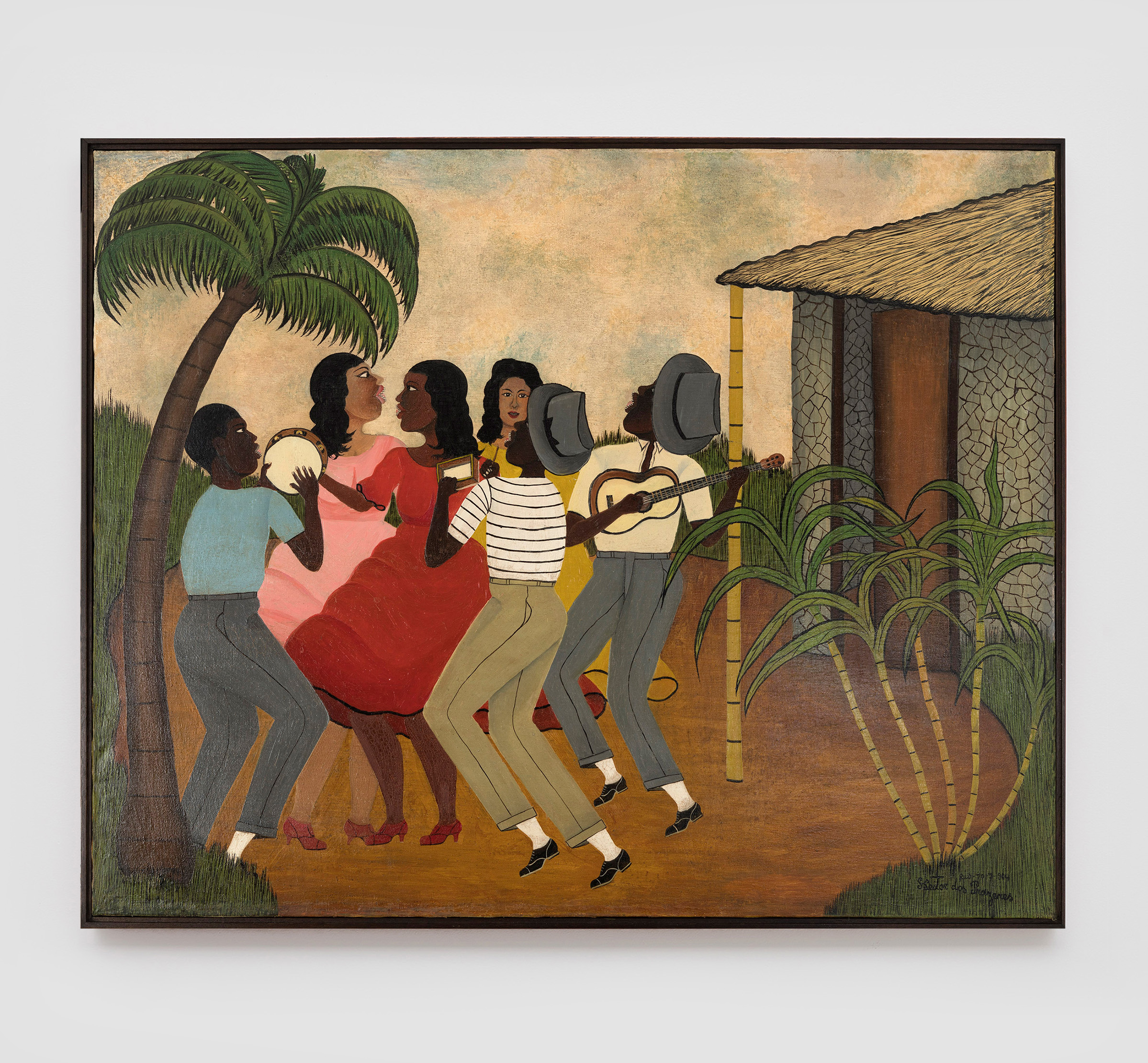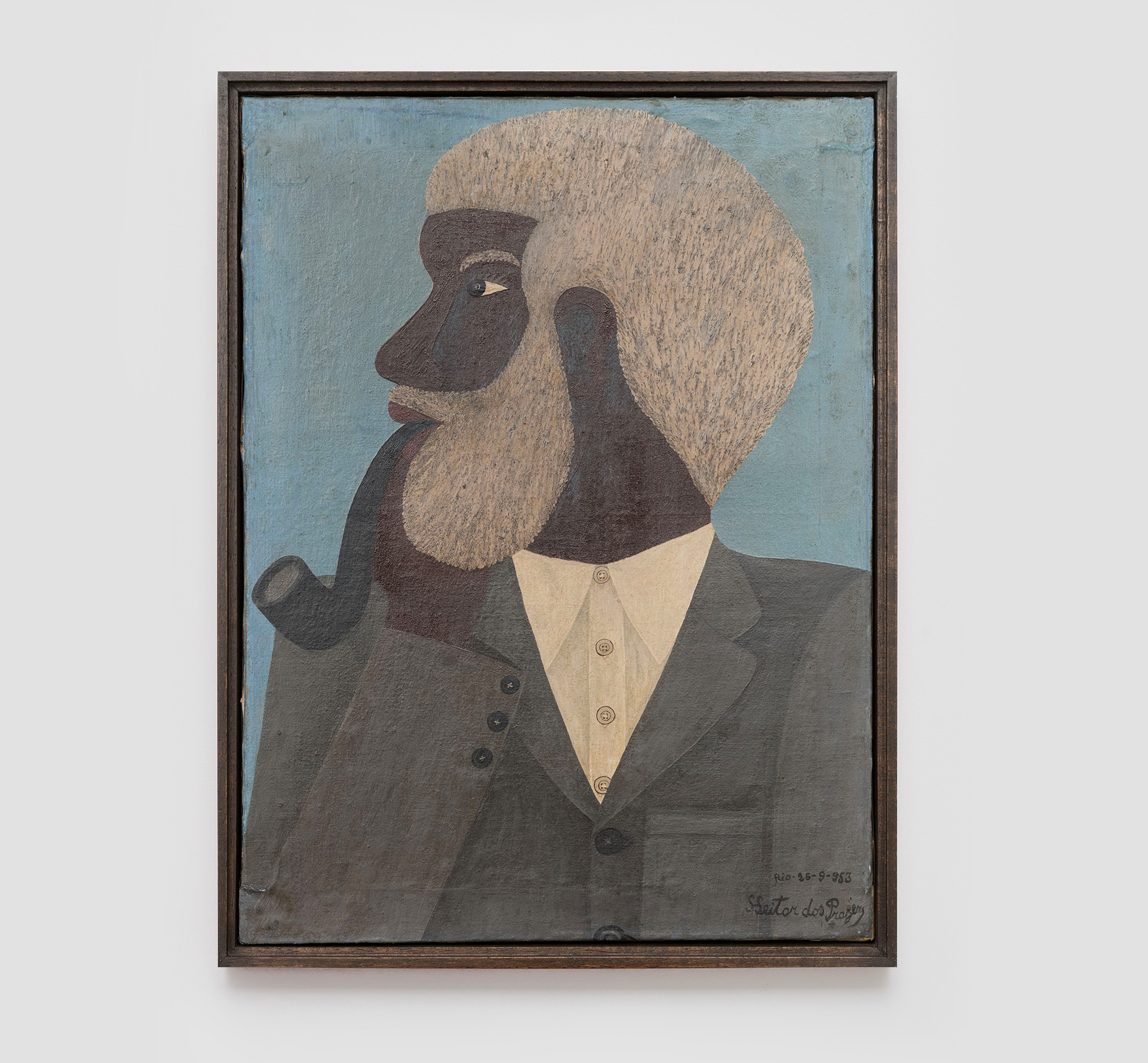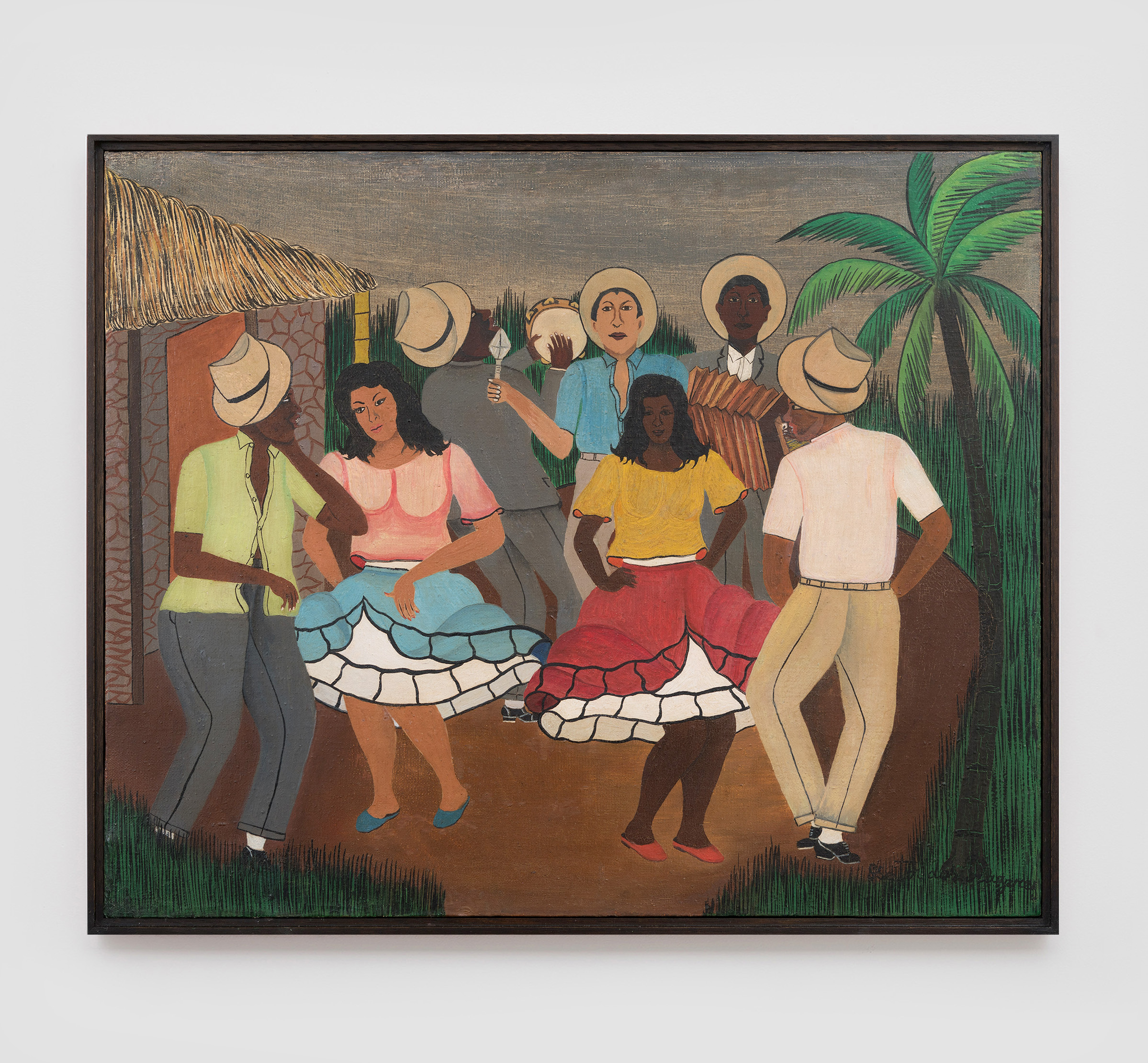Heitor dos Prazeres
As pinturas de Heitor dos Prazeres são centradas na representação do cotidiano e das formas de sociabilidade características da diáspora africana no Rio de Janeiro. Seus protagonistas são habitantes dos subúrbios e favelas cariocas em momentos que ultrapassam os estigmas da pobreza e da precariedade.
O pintor, que também era sambista e atuou na criação das primeiras escolas de samba, promove o encontro entre as artes visuais e a música popular, exaltando esse ritmo que foi perseguido, marginalizado, mas resistiu e se tornou sinônimo de brasilidade. Heitor encontrou no diálogo com os princípios modernistas um modo de traduzir para a linguagem pictórica o dinamismo, a espontaneidade e a alegria do samba. O período de atuação de Heitor como pintor corresponde ao momento de erradicação de favelas e cortiços da região central do Rio, o que levou à expansão da população para o subúrbio e para outros municípios. O artista, portanto, enaltece a vitalidade que emana mesmo diante das adversidades, bem como a capacidade de permanência e de transformação da cultura popular.
Suas primeiras telas foram produzidas em 1937. Em 1951, ganha o terceiro lugar na premiação para artistas nacionais na 1ª Bienal Internacional de São Paulo, com a pintura Moenda, que atualmente integra o acervo do Museu de Arte Contemporânea da USP. Ganha uma sala especial na 2ª Bienal Internacional de São Paulo em 1953, e participa das edições de 1961 e 1979. Em 1966, participa do Primeiro Festival Mundial de Artes Negras, em Dakar, Senegal. Cria cenários e figurinos para o Balé do IV Centenário da Cidade de São Paulo. Em 1999, é realizada uma mostra retrospectiva de seu trabalho no Espaço BNDES e no Museu Nacional de Belas Artes (MNBA), em homenagem ao seu centenário. Em 2023, uma grande retrospectiva de sua obra foi apresentada no CCBB do Rio de Janeiro. Ao longo de sua carreira artística realizou seis exposições individuais e mais de 30 mostras coletivas.
